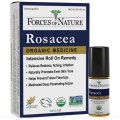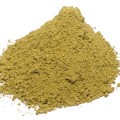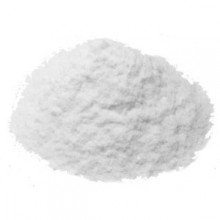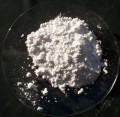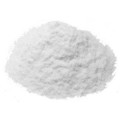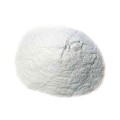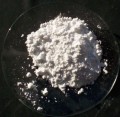 Loading... Please wait...
Loading... Please wait...- Home
- About Us
- Shipping, Returns & FAQ's
- Contact Us
-
For Your Information
- Canadian Customers Have a Choice if Shipping Via UPS
- Aura Cacia Homemade Aromatherapy Recipes
- Bella Nella Altered Art & Paper Crafts Blog
- Forms of Herbal Preparations
- Laundry Tips To Conserve Energy Blog from The Laundress
- The Story of Frontier Natural Products Co-Op
- Sovereign Silver Hydrosol and Aloe Protocol Stops Downward Spiral of Gut Dysbiosis
- Disclaimers
- Recommended Links
- RSS/Recent News
- The Story of Typhoon Housewares
- Reviews/Testimonials
- Raw Ingredients for Mfg
- Home
- Supplements
- Immune Boosters
- Ascorbic Acid Pure Vitamin C Powder FCC Food-Grade Bulk
- Home
- Supplements
- Vitamins
- Ascorbic Acid Pure Vitamin C Powder FCC Food-Grade Bulk
- Home
- Raw Materials
- Nutraceuticals
- Ascorbic Acid Pure Vitamin C Powder FCC Food-Grade Bulk
- Home
- Raw Materials
- Acids
- Ascorbic Acid Pure Vitamin C Powder FCC Food-Grade Bulk
Ascorbic Acid Pure Vitamin C Powder FCC Food-Grade Bulk
Product Description
Ascorbic acid, actually a pure synthetic form of vitamic C, contains many of the same health benefits as naturally occurring vitamin C. Perhaps the largest benefit of these nutritional elements is their antioxidant value. Antioxidants help to fight off viruses and infections and help the body to respond to challenges.
The problem with naturally occurring vitamin C is that it breaks down easily. Vitamin C is often lost in cooking. As soon as the foods are heated, the natural vitamin C begins to break down. Nutritional experts report that vitamin C can also be lost simply through storing fruits or vegetables before consumption.
Because of the sensitive nature of natural vitamin C, lots of people may not get enough, even if they include fruits and vegetables in their diets. This is why food manufacturers have chosen to add vitamin C qualities back into food and beverages using ascorbic acid. The ascorbic acid represents the active vitamin C in most processed foods. According to the U.S. Food and Drug Administration, ascorbic acid and vitamin C are similar enough in composition to be treated as equivalent chemical compounds.
Vitamin C is required for the proper development and function of many parts of the body. It also plays an important role in maintaining proper immune function.
These days, vitamin C is used most often for preventing and treating the common cold. Some people use it for other infections.
Some people use vitamin C for depression, thinking problems, dementia, Alzheimer's disease, physical and mental stress, fatigue, and attention deficit-hyperactivity disorder (ADHD).
There is some thought that vitamin C might help the heart and blood vessels. It is used for hardening of the arteries, preventing clots in veins and arteries, heart attack, stroke, high blood pressure, and high cholesterol.
Effective for:
Treatment and prevention of vitamin C deficiency, including a condition called “scurvy.”
Likely Effective for:
Improving the way the body absorbs iron.
Treating a disease called tyrosinemia in newborns when given as an injection.
Possibly Effective for:
Wrinkled skin. Skin creams containing vitamin C or vitamin C in combination with acetyl tyrosine, zinc sulfate, sodium hyaluronate, and bioflavonoids (Cellex-C High Potency Serum) seem to improve wrinkles in facial skin aged by sun exposure.
Reducing the risk of certain cancers of the mouth and breast. This only works when fresh fruits and vegetables high in vitamin C are eaten, not with vitamin C supplements.
Treating the common cold. There is a lot of controversy about the effectiveness of vitamin C for treating the common cold. However, the majority of evidence shows that taking high doses of vitamin C might shorten the course of the cold by 1 to 1.5 days in some patients. But it is not effective for preventing the common cold.
Lowering high blood pressure.
Suggested dosage by mouth
- For scurvy: 100-250 mg once or twice daily for several days.
- For treating the common cold: 1-3 grams daily.
- For preventing kidney damage related to contrast media used during diagnostic tests: vitamin C 3 grams is given before coronary angiography and then 2 grams is given after the procedure in the evening and again the following morning.
- For slowing progression of hardening of the arteries: slow-release vitamin C 250 mg in combination with 91 mg (136 IU) of vitamin E twice daily for up to 6 years.
- For tyrosinemia in premature infants on high protein diets: 100 mg of vitamin C.
- For reducing protein in the urine of patients with type 2 diabetes: vitamin C 1250 mg with vitamin E 680 IU daily for 4 weeks.
- For preventing complex regional pain syndrome in patients with wrist fractures, vitamin C 500 mg daily for 50 days.
The daily recommended dietary allowances (RDAs) are: Infants 0 to 12 months, human milk content (older recommendations specified 30-35 mg); Children 1 to 3 years, 15 mg; Children 4 to 8 years, 25 mg; Children 9 to 13 years, 45 mg; Adolescents 14 to 18 years, 75 mg for boys and 65 mg for girls; Adults age 19 and greater, 90 mg for men and 75 mg for women; Pregnancy and Lactation: age 18 or younger, 115 mg; ages 19 to 50 years 120 mg. People who use tobacco should take an additional 35 mg per day.
Do not take more than the following amounts of vitamin C: 400 mg per day for children ages 1 to 3 years, 650 mg per day for children 4 to 8 years, 1200 mg per day for children 9 to 13 years, and 1800 mg per day for adolescents and pregnant and breast-feeding women 14 to 18 years, and 2000 mg per day for adults and pregnant and lactating women.
Applied to the skin
- Most topical preparations used for aged or wrinkled skin are applied daily. Studies have used creams containing 5% to 10% vitamin C. In one study a specific vitamin C formulation (Cellex-C High Potency Serum) used 3 drops applied daily to areas of facial skin. Don’t apply vitamin C preparations to the eye or eyelids. Also avoid contact with hair or clothes. It can cause discoloration.
Find Similar Products by Category
You Recently Viewed...
Currency Converter
Choose a currency below to display product prices in the selected currency.




